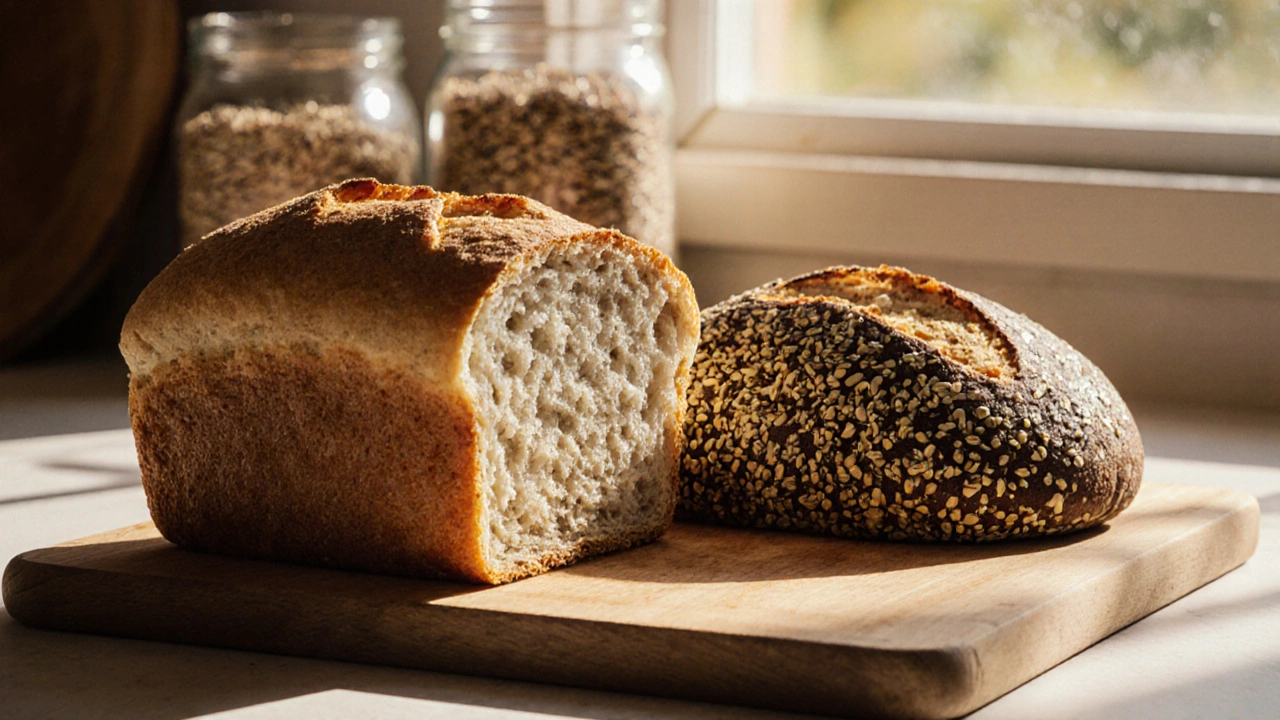Stop Eating Gluten: How Your Body Changes and What to Expect
Discover the short‑term and long‑term effects on your body when you stop eating gluten, with tips for a balanced gluten‑free diet.
When working with Gluten Withdrawal, the set of physical and mental symptoms that appear after cutting gluten out of the diet. Also known as gluten detox, it often shows up as cravings, fatigue, or mood swings. The experience is closely tied to Gluten‑Free Baking, the practice of using alternative flours and techniques to replace wheat and to Celiac Disease, an autoimmune disorder that triggers an immune response to gluten. Understanding these connections helps you manage symptoms and stay on track with a tasty, safe menu.
Gluten withdrawal Gluten Withdrawal isn’t just a mood dip; it’s a real physiological response. The body misses the familiar texture of wheat, and the gut microbiome shifts when you stop feeding it gluten. That shift often leads to cravings for breads, pastas, and pastries you used to love. To tame those urges, you need a solid plan that covers three key areas: nutrition, kitchen habits, and label awareness.
First, swap out wheat with low‑carb, high‑fiber alternatives like almond flour, coconut flour, or oat fiber. These options keep blood sugar steady, which cuts down on the energy crashes that fuel cravings. Low‑Carb Desserts, sweet treats made with reduced carbs and gluten‑free flours give you the same satisfaction without the gluten spike. Second, master cross‑contact prevention. Even a tiny crumb of wheat in a mixing bowl can trigger symptoms for someone with celiac disease, so dedicate separate utensils, bowls, and storage containers. This practice reduces accidental gluten exposure and prevents flare‑ups during withdrawal. Finally, become a label detective. Look for hidden gluten in ingredients like malt, dextrin, or modified food starch. Knowing how to read labels turns grocery trips into confidence‑building missions rather than anxiety‑laden scavenger hunts.
These steps create a feedback loop: the more you control your environment, the fewer withdrawal symptoms you feel, and the easier it becomes to explore new recipes. That’s why many people find the transition smoother when they adopt a gluten‑free baking mindset early on. It’s not just about swapping ingredients; it’s about reshaping habits. When you consistently use dedicated tools and understand the science behind gluten‑free flours, cravings lose their power, and you start to enjoy the new textures and flavors you discover.
The articles below dive deeper into each of these aspects. You’ll find guides on freezing tiramisu for gluten‑free parties, vegan candy swaps that keep you free from hidden gluten, and practical tips for reading UK labels in 2025. There’s also a look at how vinegar can brighten gluten‑free cheesecakes and why sour cream adds creaminess without re‑introducing gluten. By the end of the list, you’ll have a toolbox full of recipes, safety tricks, and science‑backed advice to turn gluten withdrawal from a challenge into an opportunity for culinary adventure.
Ready to explore? Scroll down to see the full collection of posts that cover everything from dessert storage to ingredient deep‑dives, all designed to help you thrive during and after gluten withdrawal.

Discover the short‑term and long‑term effects on your body when you stop eating gluten, with tips for a balanced gluten‑free diet.